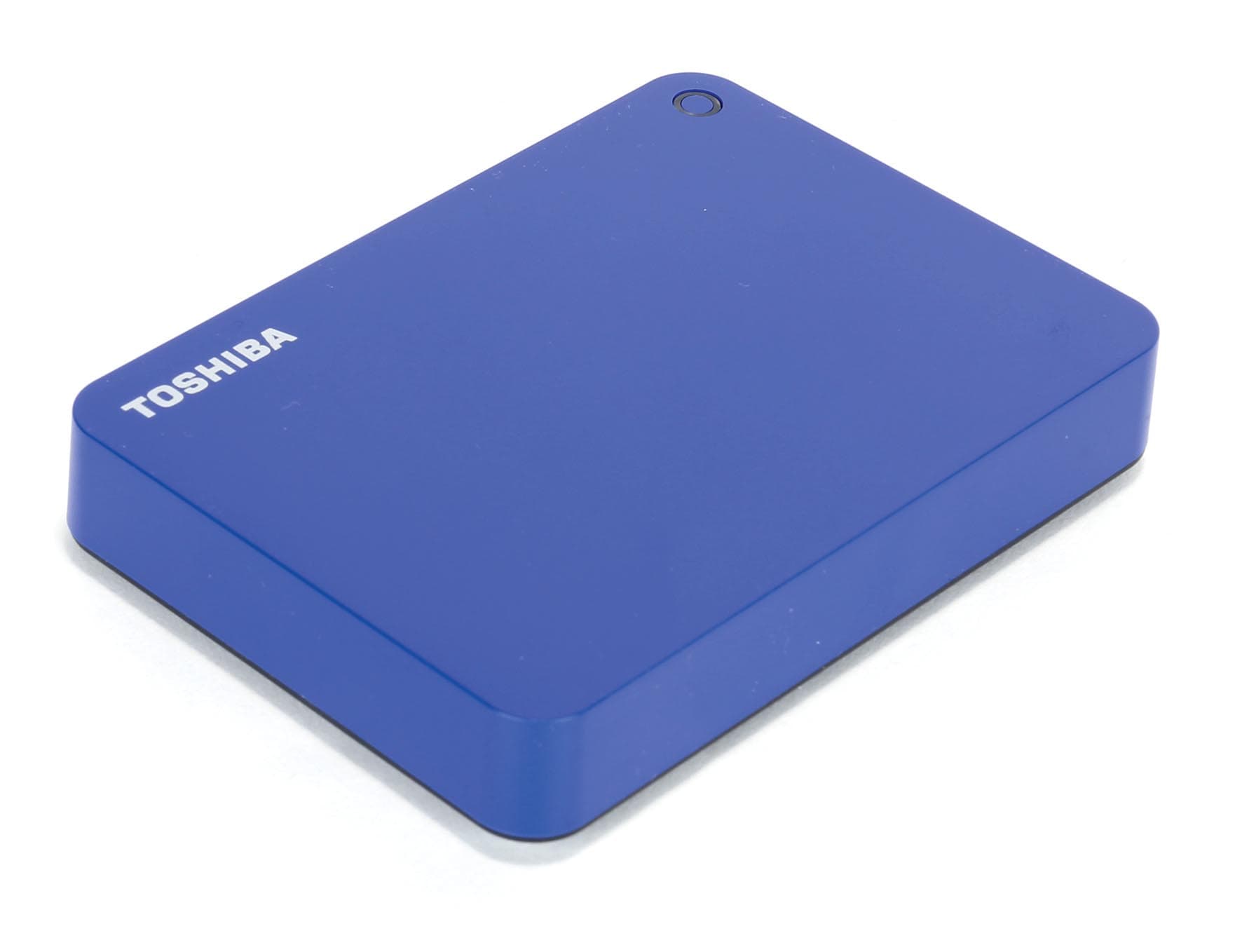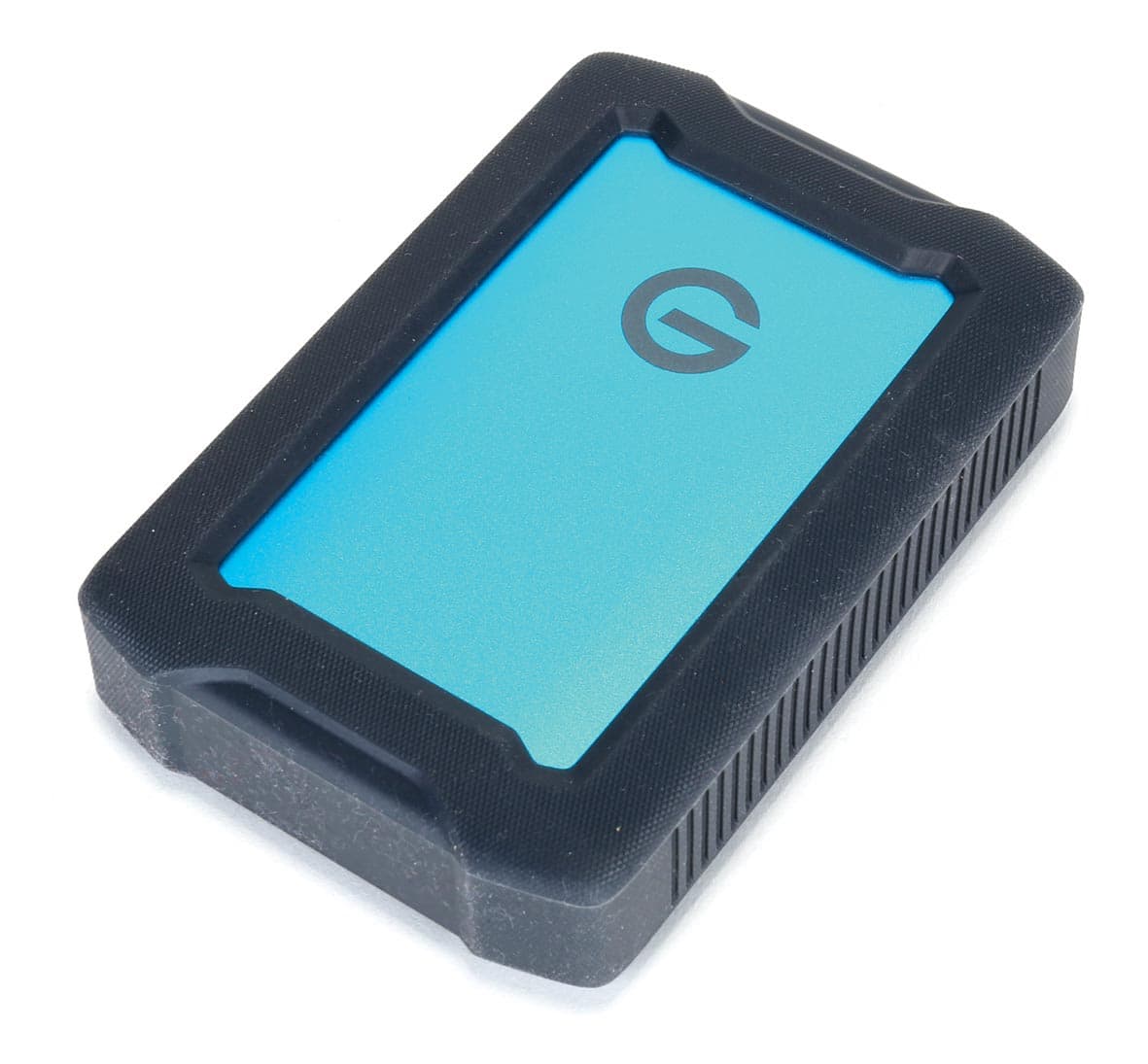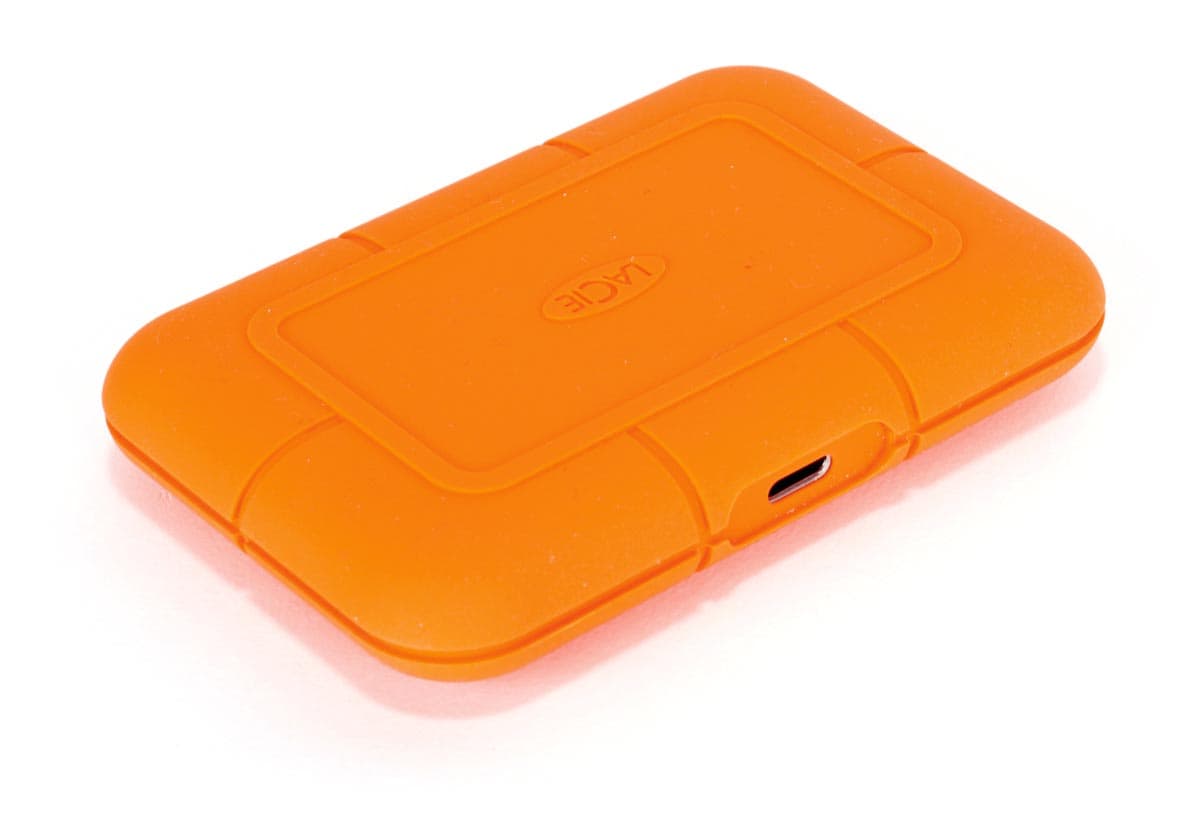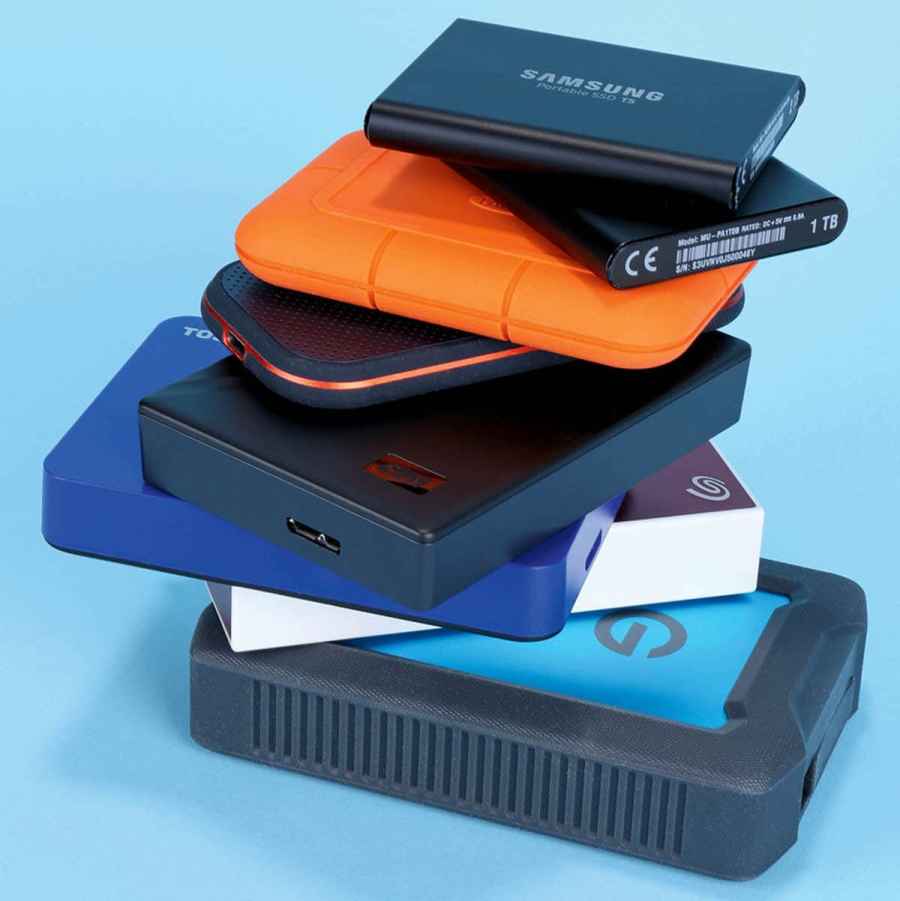While you are spoiled for choice when it comes to cloud-based storage these days, there is still a big demand for portable, capacious storage devices. Copying over images, downloading them, or making backups to portable drives, can be faster and more convenient, and you don’t need to worry if your Internet connection goes down or you don’t have access to Wi-Fi.
We would still probably recommend cloud storage as well; just like pensions and insurance, storage only becomes really interesting when you need it, and a belt and braces approach won’t do you any harm.
Here are our portable hard drive best buys, but before we start, here are a few tips:
- Transfer speed – For the fastest read and write times a solid state hard drive is the best option, as well as being the smallest.
- Laptop considerations – Many laptops have low capacity SSDs built-in, so a 1TB external SSD is an ideal option for Lightroom catalogues.
- Rugged design – If you plan to use your hard drive in harsh outdoor environments, rugged hard drives offer the most protection from the elements.
- High capacity – Traditional mechanical hard drives still offer the best cost to storage ratio making them the best option for long term storage.
- USB compatibility – Most hard drives now offer USB 3.0 alongside USB-C and USB-A connections, but most options are backwards compatible to USB 2.0.
Toshiba Canvio Advance
Hard drives have been becoming more and more affordable, with high-capacity drives in the 2.5-inch format now commonly available. So, not only does this mean that your image storage need not take up valuable desk space, you can also easily travel with most, if not all, of your image files should you need to. The Toshiba Canvio Advance is a reasonably priced mechanical hard drive available with storage capacities of 1,2,3 and 4TB, starting at £50 for the 1TB version and costing £105 for the 4TB version. Drives are available in black, white, red or blue so you can choose the colour you like best if that’s important to you. Out of the box The Canvio is plug and play and really couldn’t be simpler to use. Out of the box, it’s formatted to NTFS for Windows, so Mac users will need to format the drive in Disk Utility before using it. If you are a Mac user, it’s worth noting that the drive comes preloaded with PDF instruction manuals and a link to the free downloadable software, so since Macs can read NTFS drives but not write to them, you can copy these files to your computer before formatting. The free software that can be downloaded from the Toshiba website includes Toshiba Storage Backup Software that allows you to specify individual files and folders to automatically backup, as well as to control backup settings.
Out of the box The Canvio is plug and play and really couldn’t be simpler to use. Out of the box, it’s formatted to NTFS for Windows, so Mac users will need to format the drive in Disk Utility before using it. If you are a Mac user, it’s worth noting that the drive comes preloaded with PDF instruction manuals and a link to the free downloadable software, so since Macs can read NTFS drives but not write to them, you can copy these files to your computer before formatting. The free software that can be downloaded from the Toshiba website includes Toshiba Storage Backup Software that allows you to specify individual files and folders to automatically backup, as well as to control backup settings.
The other software is Toshiba Storage Security Software which allows you to password-protect the drive. The interface is USB 3.0, which is backwards compatible to USB 2.0. The transfer time of a 10.3GB folder of images from a laptop with an SSD drive was one minute 45 seconds. This isn’t a scientific test, of course, but it does show average real-world transfer times of a typical folder of images after a day or two of shooting. As the least expensive hard drive in the test, combined with reasonable transfer speeds, the Toshiba Canvio Advance represents excellent value for money.

Drivetype: Mechanical
Available capacities: 1,2,3,4TB
Interface: USB 3.0
Compatibility: Windows 7 / macOS 10.10 and above
Transfer rate: Up to 5.0 Gbit/s
Dimensions: 109 x 78 x 19mm
Weight: Up to 210g
Western Digital My Passport
There are some hard drive companies that need little introduction, and Western Digital is certainly one of them. The My Passport product line has long been popular, and here we take a look at the latest version of a compact hard drive that’s available in 1,2,4 and 5TB storage capacities, and comes in black, blue and red enclosures. The 1TB version costs £68 while the 5TB version costs £180, which is well priced considering it’s five times the capacity of the 1TB drive. This is once again a plug and play device with no need for a separate power supply, like the Toshiba and G-Technology drives, which keeps cables to a minimum and makes use extremely easy whether using purely at home on a desk, travelling or moving files between computers.  The Western Digital My Passport comes NTFS formatted for Windows, so Mac and Linux users will need to format the drive before use. But like the Toshiba drive, Mac users should view the drive contents before formatting because there is a disk image (DMG file) on the drive to install the free WD Discovery software. There’s also an EXE file for Windows users. This software includes WD Backup and password protection, as well as the ability to connect to popular social media and cloud storage services including Facebook, Dropbox, and Google Drive. This will be particularly useful to those who back up their images and files to one of these popular services. The interface used by the drive is USB 3.2 Gen 1, which is backwards compatible with USB 2.0.
The Western Digital My Passport comes NTFS formatted for Windows, so Mac and Linux users will need to format the drive before use. But like the Toshiba drive, Mac users should view the drive contents before formatting because there is a disk image (DMG file) on the drive to install the free WD Discovery software. There’s also an EXE file for Windows users. This software includes WD Backup and password protection, as well as the ability to connect to popular social media and cloud storage services including Facebook, Dropbox, and Google Drive. This will be particularly useful to those who back up their images and files to one of these popular services. The interface used by the drive is USB 3.2 Gen 1, which is backwards compatible with USB 2.0.
The transfer time of a 10.3GB folder of images from a laptop with an SSD drive was one minute 31 seconds, which makes it marginally quicker than the Toshiba drive. The My Passport is compact and lightweight, and its sleek design looks and feels great. Although, like the Toshiba drive, it lacks the rugged build including rain and dust resistance of the G-Technology drive. This means it’s much more suited to use where it’s unlikely to be exposed to harsh elements.

Drivetype: Mechanical
Available capacities: 1,2,3,4TB
Interface: USB 3.2 Gen. 1
Compatibility: Windows 8.1 / requires reformatting for Mac
Transfer rate: Not specified
Dimensions: 107.2 x 75 x 11.15mm
Weight: 210g
G-Technology ArmorATD
Rugged hard drives have been around for a long time and, being aimed at photographers and filmmakers working in the field, this style of hard drive will likely remain a popular option for the foreseeable future. The G-Technology ArmorATD is a premium drive with good looks and build quality to match, but with all the protection it’s also the largest drive in the test. If you plan to use your computer and hard drive in harsh environments, the ArmorATD does have some impressive credentials including triple-layer shock resistance, crush resistance up to 1000lbs, as well as dust and moisture resistance. Some of this comes in part as a result of the protective rubber bumper that surrounds the edges of the drive and includes a cover for the USB-C port.
The ArmorATD is available in 1,2 and 4TB capacities starting at £86 for the 1TB version and £163 for the 4TB version. This essentially makes it the most expensive mechanical drive in the test, but not by a margin worth worrying about if this is the style of hard drive you’re looking for. The Toshiba and Western Digital certainly wouldn’t stand up to the abuse this hard drive could. The interface used by the drive is USB-C 3.1 Gen 1, and a USB-C to USB-A adapter is included. The transfer time of a 10.3GB folder of images from a laptop with an SSD drive was one minute 45 seconds with a direct USB-C connection and the same with the USB-A adapter.
This is surprising given the Toshiba uses slightly older USB technology and transferred the data in the same amount of time, while the more advanced My Passport with USB 3.2 was the fastest of the mechanical drives. This is likely because the drive is factory formatted exFAT to work with macOS and Windows out of the box, so a reformat makes sense for better performance. Overall, the ArmorATD is a tough workhorse that’ll be good for location-based photographers who need a more robust backup and archiving hard drive.
Drivetype: Mechanical
Available capacities: 1,2,3,4TB
Interface: USB-C ready, USB 3.0 and Thunderbolt 3
Compatibility: Windows 7 / macOS 10.12 and above
Transfer rate: Up to 140MB/s
Dimensions: 30 x 18 x 47cm
Weight: 358g
SanDisk Extreme Portable SSD
Solid state drives, or SSDs, provide a much more secure way to store your images because these drives don’t contain moving parts like mechanical drives. They’re faster and smaller, and although their cost is coming down they remain a much more expensive option than mechanical drives for large-scale backups. The SanDisk Extreme Portable SSD is a palm-sized drive that’s perfect for backing up on the move and costs £76 for the 250GB, while the 1TB version will set you back £227. So, as you’ll immediately notice this is considerably more than the average mechanical drive, but SSDs are a different proposition. The SanDisk also features an IP55 rating, which means it has dust protection and can also withstand rain, splashes and spills, although it’s not fully waterproof. The drive comes pre-formatted exFAT to make it compatible with both macOS and Windows out of the box, and when you first plug the drive in, you’ll see that there’s an EXE for Windows and a download link for Mac users on the drive for SanDisk SecureAccess – software to password protect your files. The interface used by the drive is USB-C (USB 3.1 Gen 2), and the device comes with a USB-A adapter for those who don’t have a USB-C port on their computer. The transfer time of a 10.3GB folder of images from a laptop with an SSD drive was 37 seconds, which is extremely fast and matched only by the Lacie SSD that achieved an identical transfer time. To put this into context, all of the mechanical drives tested took over 1.5 minutes to transfer this data so the time savings when on the move aren’t to be sniffed at.
The drive comes pre-formatted exFAT to make it compatible with both macOS and Windows out of the box, and when you first plug the drive in, you’ll see that there’s an EXE for Windows and a download link for Mac users on the drive for SanDisk SecureAccess – software to password protect your files. The interface used by the drive is USB-C (USB 3.1 Gen 2), and the device comes with a USB-A adapter for those who don’t have a USB-C port on their computer. The transfer time of a 10.3GB folder of images from a laptop with an SSD drive was 37 seconds, which is extremely fast and matched only by the Lacie SSD that achieved an identical transfer time. To put this into context, all of the mechanical drives tested took over 1.5 minutes to transfer this data so the time savings when on the move aren’t to be sniffed at.
The SanDisk Extreme Portable SSD is small, lightweight and incredibly fast – everything you’d want and expect from a portable SSD. And while it wouldn’t serve the needs of most photographers as a main image backup solution, for day to day use and backup on location it’s an excellent option. It’s so fast, you can even easily run a Lightroom catalogue from it with no noticeable slowdowns.

Drivetype: Solid state
Available capacities: 250GB, 500GB, 1TB
Interface: USB-C USB 3.1 Gen 2
Compatibility: Windows 8 / macOS 10.6 and above
Transfer rate: Up to 550MB/s
Dimensions: 33 x 101 x 127mm
Weight: 79g
Samsung Portable SSD T5
If good things come in small packages, then the Samsung Portable SSD T5 will be a great option for photographers looking for a pocket-sized hard drive that’s smaller than the average wallet. In terms of price, it sits in the middle with the 250GB version costing £80, while the 2TB version costs £309. It also comes in either a black, blue or red stylish metallic enclosure. The Samsung drive is the smallest and lightest of all drives in the test at just 52g and takes up virtually no desk space when in use. You’d be forgiven for thinking it’s a delicate hard drive based on the way it looks and feels – it looks more smart than tough – but the T5 can withstand drops of up to 2m thanks to a shock-resistant build.  The Samsung T5 comes with software for PCs and Macs to password protect the drive, and to download the latest firmware updates as they’re released. You can also download a mobile app for Android smartphones and tablets, which provides all the functionality of the desktop app except the ability to update the firmware. The interface used by the drive is USB 3.2 Gen 2 and comes with both USB-C and USB-A cables.
The Samsung T5 comes with software for PCs and Macs to password protect the drive, and to download the latest firmware updates as they’re released. You can also download a mobile app for Android smartphones and tablets, which provides all the functionality of the desktop app except the ability to update the firmware. The interface used by the drive is USB 3.2 Gen 2 and comes with both USB-C and USB-A cables.
The transfer time of a 10.3GB folder of images from a laptop with an SSD drive was 47 seconds. This is slightly slower than the other SSD drives, but certainly isn’t a deal-breaker and still represents a fast transfer speed for on-location backups. The T5 comes formatted exFAT to make it compatible with Windows, macOS and Android out of the box. Samsung Portable SSD T5 is incredibly small and lightweight which makes it a great option for image backups on the move and to transfer data from one computer to another.
Plus, the shock-resistant build is a welcome feature. Data transfers are slightly slower than those of the Lacie and SanDisk, but at just 10 seconds slower this is negligible for most users. Those editing video from an external hard drive may, however, benefit from the slightly faster transfer speed of the other SSD drives in this roundup.

Drivetype: Solid state
Available capacities: 250GB, 500GB, 1TB, 2TB
Interface: USB-C USB 3.1 Gen 2
Compatibility: Windows 7 / macOS 10.9 and above
Transfer rate: Up to 540MB/s
Dimensions: 74 x 57.3 x 10.5mm
Weight: 52g
LaCie Rugged SSD
● From £260 – Amazon UK
When it comes to rugged hard drives LaCie is one of the best-known brands producing these types of products. The LaCie Rugged SSD maintains this heritage while incorporating the latest technology for on-location file access with impressive features to help to keep the drive, and most importantly your data, safe in adverse conditions. The LaCie Rugged SSD is a palm-sized, completely rubberised hard drive that comes in the classic Rugged orange that immediately tells you the manufacturer and model series of the drive. This is one of the more expensive drives in the test with the 500GB costing £180, and the 2TB version costs a staggering £500. This is considerably more expensive than both the Samsung and SanDisk SSDs, so what do you get with the LaCie that makes it stand out from its closest competition? The LaCie drive is IP67 rated, which means it’s both water and dust resistant to the point where it can be submerged by up to 1.5m for up to 30 minutes. Of course, it’s unlikely you’d ever submerge the device in this way but if you work in locations where there’s potential to drop your hard drive into water, this combined with the fact the LaCie is drop resistant up to 3m and offers up to 2 tonnes of crush resistance, will be attractive. You also get a 5-year warranty that includes a lab-based data rescue option if your drive does get damaged or corrupted.
This is one of the more expensive drives in the test with the 500GB costing £180, and the 2TB version costs a staggering £500. This is considerably more expensive than both the Samsung and SanDisk SSDs, so what do you get with the LaCie that makes it stand out from its closest competition? The LaCie drive is IP67 rated, which means it’s both water and dust resistant to the point where it can be submerged by up to 1.5m for up to 30 minutes. Of course, it’s unlikely you’d ever submerge the device in this way but if you work in locations where there’s potential to drop your hard drive into water, this combined with the fact the LaCie is drop resistant up to 3m and offers up to 2 tonnes of crush resistance, will be attractive. You also get a 5-year warranty that includes a lab-based data rescue option if your drive does get damaged or corrupted.
The interface used by the drive is USB 3.1 Gen 2, and it comes with both USB-C and USB-A cables so you can use the connection type you prefer. The transfer time of a 10.3GB folder of images from a laptop with an SSD drive was an impressive 37 seconds putting it on a par with the times recorded by the SanDisk drive. The Lacie Rugged SSD is an excellent performer as one of the two fastest hard drives in the test alongside the SanDisk. The rugged build is best in class and provides the ultimate amount of protection if this is what you require. The biggest hurdle with the LaCie is simply price – it’s a premium product with a price to match – but for some photographers, this will be a small price to pay to know that their images are safe in even the harshest conditions and environments.
Drivetype: Solid state
Available capacities: 500GB, 1TB, 2TB
Interface: USB-C USB 3.1 Gen 2
Compatibility: Windows 7 / macOS 10.11 or later
Transfer rate: Up to 950MB/s
Dimensions: 97.9 x 64.9 x 17mm
Weight: 100g
More reading
Organise. your photos once and for all using Lightroom








